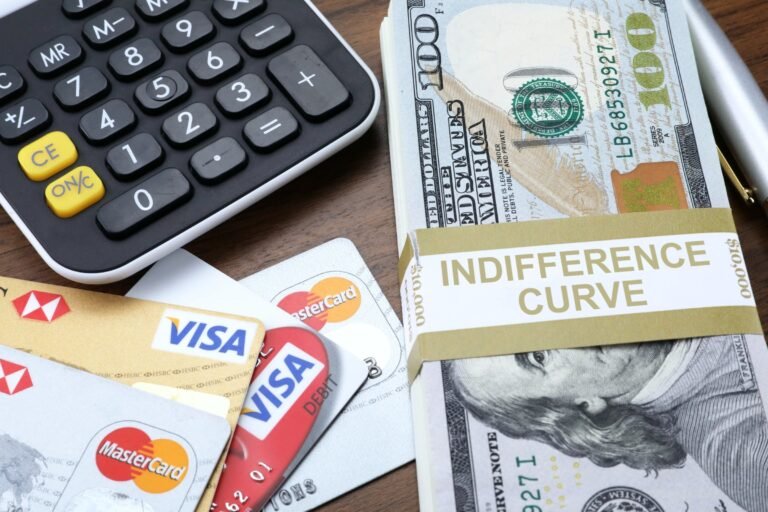Nature & Scope of Business Economics
Now having understood micro and macroeconomics, let us understand the nature of business economics:
The following points will describe the nature of business economics:
. Business economics is a science
· Based on microanalysis
· Incorporates elements of macro analysis
· Business economics is also an art
· Use of theory of markets and private enterprises
· Pragmatic in approach
· Interdisciplinary in nature
· Normative in nature
Let us understand each of these points:
Business economics is a science: science is a systematized body of knowledge which establishes cause and effect relationships. Business economics integrates the tools of decision sciences such as mathematics, statistics, and econometrics with economic theory to arrive at appropriate strategies for achieving the goals of the business enterprises. It follows scientific methods and empirically tests the validity of the results.
Based on microanalysis: business economics is mainly related to microeconomics. A business manager generally concerned about its achievement of the predetermined objectives of his organization to ensure long-term survival and profitable functioning of the organization. Since business economics more with the decision-making problems of individual establishments, it relies heavily on the techniques of microeconomics.
Incorporates elements of macro-Economics: a business unit affects the external environment of the economy in which it operates, such as:
- The general price-level
- Income and employment levels in the economy and
- Government policies with respect to:
- Taxation
- Interest rates
- Industries
- Prices
- Distribution
- Wages and regulation of monopolies.
All these are components of macroeconomics. A business manager must be acquainted with these and other macroeconomic variables, present as well as future, which may influence his/her business environment.
Business economics is also an art: as it involves practical application of rules and principles for the attainment of set objectives.
Use of theory of markets and private enterprises: business economics largely uses the theory of markets and private enterprise. It uses the theory of the firm and resource allocation in the backdrop of a private enterprise economy.
Pragmatic in approach: microeconomics is abstract and purely theoretical, and analyzes economic phenomena under unrealistic assumptions. Business economics is pragmatic in its approach as it tackles practical problems which the firms face in the real world.
Note: pragmatic meaning: dealing with things sensibly and realistically in a way that is based on practical rather than theoretical considerations.
Interdisciplinary in nature: business economics is interdisciplinary in nature as it incorporates tools from other disciplines such as:
- Mathematics
- Operations research
- Management theory
- Accounting
- Marketing
- Finance
- Statistics and
- Econometrics
Let us understand difference between positive and normative science:
| Positive/Pure Science | Normative Science |
| Analyzes cause and effect relationship between variables in an objective and scientific manner. It does not involve any value judgment. | Involves value judgments. |
| In other words, it states what is of the state of affairs and not what ought to be. | It suggests what should be a particular course of action under given circumstances. |
| It is descriptive in nature in the sense that it describes the economic behavior of individuals or society without prescriptions about the desirability or otherwise of such behavior | It is prescriptive in nature and suggests what should be a particular course of action under given circumstances. Welfare considerations to be fixed in normative science. |
Economic theory to be categorized as below:
- Positive and
- Normative
Business economics is normative: business economics is generally normative or prescriptive in nature. It suggests the application of economic principles with regard to policy formulation, decision-making and future planning. However, if firms are to establish valid decision rules, they must thoroughly understand their environment. This requires the study of positive or descriptive economic theory. Thus, business economics combines the essentials of normative and positive economic theory, the emphasis being more on the former rather than the latter.
Facts:
- The economic world is extremely complex, as there is a lot of interdependence among the decisions and activities of economic entities.
- Economic theories are hypothetical and simplistic in character, as they are based on economic models built on simplifying assumptions.
- Thus, there is usually a gap between the propositions of economic theory and happenings in the real economic world in which the managers make decisions.
- Business economics enables application of economic logic and analytical tools to bridge the gap between theory and practice.
- Business economics is not only related to microeconomics, but macro-Economics also has an important role to play.
- Macroeconomic analyzes the background of economic conditions in an economy which will immensely influence the individual firm’s performance as well as its decisions.
- Business firms need a thorough understanding of the macroeconomic environment in which they have to function.
- For example, knowledge regarding conditions of inflation and interest rates will be useful for the business economist in framing suitable policies.
- Moreover, the long-run trends in the business world need to be determined by the prevailing macroeconomic factors.
Scope of business economics: is quite wide. It covers most of the practical problems a manager or firm faces. There are two categories of business issues to which economic theories can be directly applied:
| Internal issues or operational issues Solved: using microeconomics External issues or environmental issues Solved: using macroeconomics |
Let us see both of them
1. Microeconomics applied to internal or operational issues:
· Operational issues include all those issues that arise within the organization and fall within the purview and control of management.
· These issues are internal in nature & related to choice of business and its size.
Few examples of operational issues:
| Product decisionsTechnology and factor combinationsPricing and sales promotionFinancing and managing Investments and inventory |
The following micro-economic theories deal with most of these issues.
| Demand analysis and forecastingProduction and cost analysisInventory managementMarket structure and pricing policiesResource allocationTheory of capital and investment decisionsProfit analysisRisk and uncertainty analysis |
Now let us consider these theories one by one:
Demand analysis and forecasting: Demand analysis pertains to the behavior of consumers in the market, by studying the nature of consumer preferences and its effect on changes while determining demand such as: price of the commodity, consumer’s income, price of related commodities, consumer taste and preferences, etc.
Demand forecasting is the technique of predicting future demand for goods and services on the basis of past behavior of factors which affect demand. Accurate forecasting is essential for a firm to enable it to produce the required quantities at the right time and to arrange, well in advance for the various factors of production i.e., raw materials, labor, machines, equipment, building etc.
Interpretation: business economics provides managers with the scientific tools which assist him in demand forecasting.
· Production and cost analysis:
Production theory: explains the relationship between inputs and output. A business economist has to decide on the optimum size of output, given the objectives of the firm. He has to ensure that the firm is not incurring undue costs. Production analysis enables the firm to decide on the choice of appropriate technology and selection of least-cost input-mix to achieve a technically efficient way of producing output, given the inputs.
Cost analysis: enables firms to recognize the behavior of costs when variables such as output, time period and size of plant change. The firm will be able to identify ways to maximize profits by producing the desired level of output at the minimum possible cost.
· Inventory management: theories pertain to the rules that firms use to minimize the costs associated with maintaining inventory in the form of: work-in-progress, raw materials and finished goods. Inventories policies affect the profitability of the firm. Business economists use methods such as ABC analysis, simple simulation exercises and mathematical models to help firms to maintain optimum stock of inventories.
· Market structure and pricing policies: analysis of market structure provides information about the nature and extent of competition which the firms have to face. This helps in determining the degree of market power (ability to determine prices) which the firm commands and the strategies to be followed in market management under given competitive conditions such as product design and marketing. Price theory explains to us how prices will be determined under different types of market conditions and assists them in framing suitable price policies.
· Resource allocation: business economics with the help of advanced tools such as linear programming enables the firm to arrive at the best course of action for optimum utilization of available resources.
· Theory of capital and investment decisions: for maximizing profits, firms have to carefully evaluate their investment decisions and carry out a sensible policy of capital allocation. Theories related to capital and investment provide scientific criterion for choice of investment projects and in the assessment of the efficiency of capital. Business economics supports decision-making on allocation of scarce capital among competing uses of funds.
· Profit analysis: profits are mostly uncertain due to changing prices and market conditions. Profit theory guides the firm in the measurement and management of profits under conditions of uncertainty. Profit analysis is also immensely useful in future profit planning.
· Risk and uncertainty analysis: business firms generally operate under conditions of risk and uncertainty. Analysis of risk and uncertainties help the business firms in arriving at efficient decisions and in formulating plans on the basis of past data, current information and future prediction.
- Macroeconomics applied to external or environmental issues: environmental factors have significant influence upon the functioning and performance of business. The major macroeconomic factors relate to:
| The type of economic systemStages of business cycleThe general trends in national income, employment, prices saving and investmentStages of business cycleThe general trends in national income, employment, prices, savings, and investment.Government’s economic policies such as industrial policy, competition policy, fiscal policy, foreign trade policy and globalization policies.Working of central banks and financial sector and capital market and their regulation.Socio-economic organizations such as trade unions, producer, and consumer unions and cooperatives.Social and political environment. |
Conclusion: To conclude, we can just say microeconomics explains things at the lowermost end of an economy, whereas macroeconomics deals with the things at the topmost end. We can not say anything about which is better, as they both make two ends meet.
After completing Macro & Micro Economics and Nature & Scope of Business Economics try these questions for testing yourself:
Created By: Kamaishi Singhvi
Thanks for Reading,
If you like this please do comment and suggest us if any improvements required.






